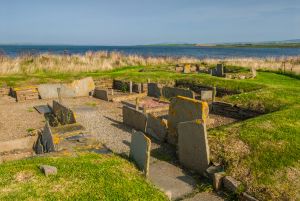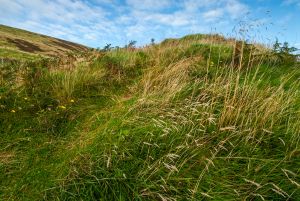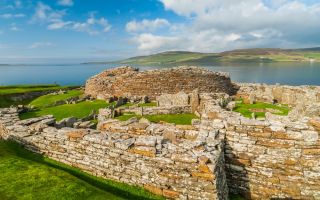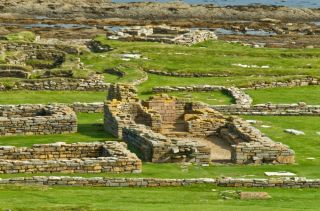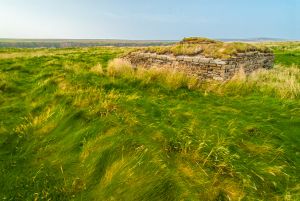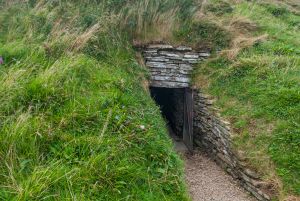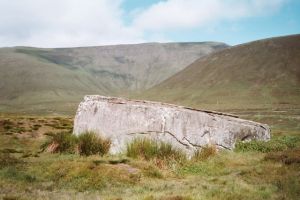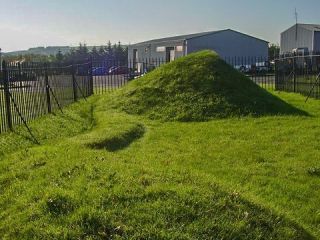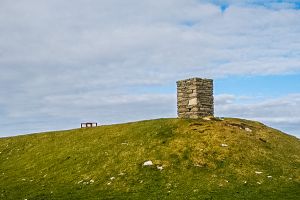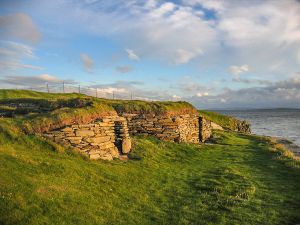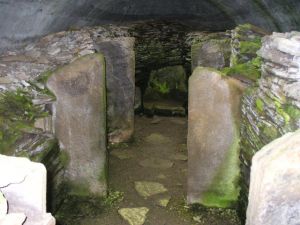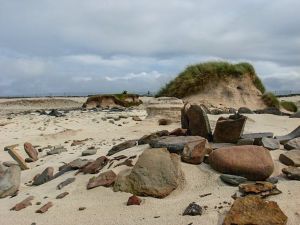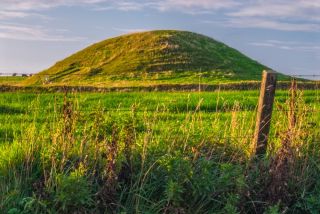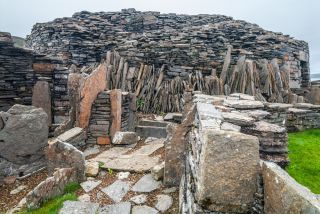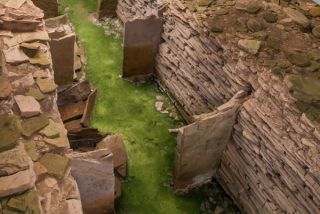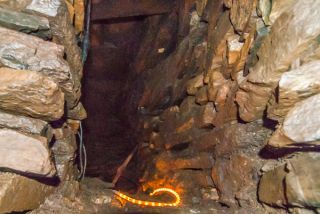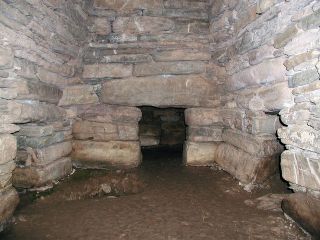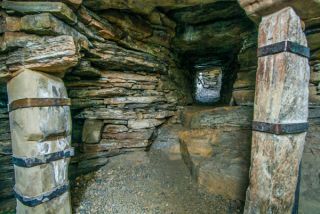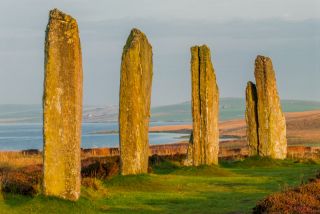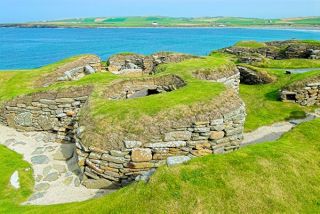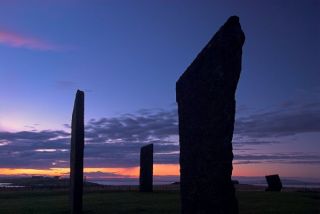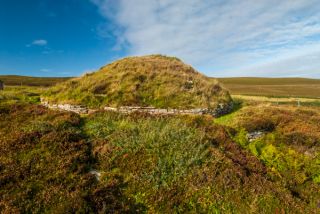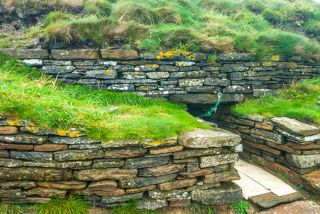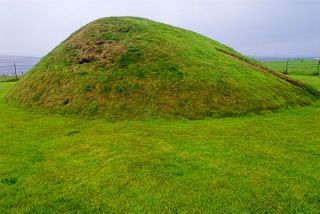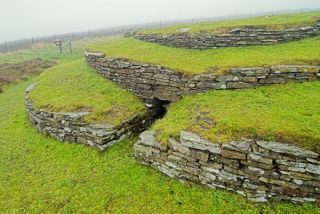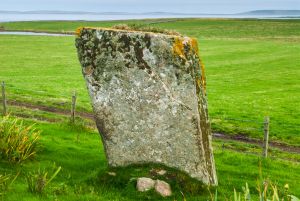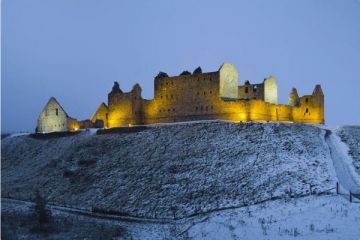Orkney Stone Circles and other Ancient Sites
Stone circles, chambered cairns, brochs, deserted villages, and more
Orkney is a paradise of the past. There are probably more ancient sites in Orkney than anywhere else in the UK, many are free entry, and most are uncrowded. Several of the most famous sites are clustered together near Loch Harray and form the Heart of Orkney World Heritage Site.
Barnhouse is a Neolithic village located on the shores of Loch Harray beside the Stones of Stenness circle and just a short distance from the Ring of Brogar.
B9055,
Stenness,
Orkney,
Highlands and Islands,
Scotland, KW16 3JZ
Heritage Rating: 
Nearest: Self Catering
Blackhammer Chambered Tomb is a Neolithic chambered cairn dating to approximately 2500 BCE. Entry to the interior reveals an elongated corbeled chamber with upright partitions. The interior is unusually well lit due to a plexiglass skylights inserted in the roof.
Tratland,
Rousay,
Orkney,
Highlands and Islands,
Scotland
Heritage Rating: 
Nearest: Self Catering
One of the finest brochs in Scotland, Gurness stands on the shore looking across to Rousay. The very extensive remains include striking earth ramparts and the remains of several Iron Age buildings.
Aikerness,
Mainland,
Orkney,
Highlands and Islands,
Scotland
Heritage Rating: 
Nearest: Self Catering
Birsay is a tidal island joined to the mainland by a causeway. On the island are extensive remains of both Pictish and Norse settlements, including a 12th-century Norse cathedral. A small museum displays artefacts found during excavations. The location is superb, and the remains of buildings quite impressive.
Brough Head,
Mainland,
Orkney,
Highlands and Islands,
Scotland
Heritage Rating: 
Photos
of Brough of Birsay
Nearest: Self Catering
The remains of a 10th-century chapel stand in a spectacular headland setting on the eastern tip of Deerness, Orkney. Some debate exists whether the site is that of a Norse settlement, early Christian monastery, or Iron Age promontory fort. The Brough has been a traditional site of pilgrimage for centuries.
Deerness,
Mull Head,
Orkney,
Highlands and Islands,
Scotland
Heritage Rating: 
Nearest: Self Catering
Cuween is a chambered cairn, built in the Neolithic period, about 5,000 years ago. It is composed of a central chamber with 4 cells, reached by a low passage. When the chamber was excavated it was found to contain the remains of humans, dogs, and oxen.
Finstown,
Mainland,
Orkney,
Highlands and Islands,
Scotland
Heritage Rating: 
Nearest: Self Catering
The Dwarfie Stane is a fascinating 5000-year-old block of red sandstone which has been cut to create a burial chamber. The stane lies in a valley near the northern tip of Hoy, between Rackwick and Quoyness. The stane is possibly the only British example of a rock-cut tomb.
Hoy,
Quoyness,
Orkney,
Highlands and Islands,
Scotland
Heritage Rating: 
Nearest: Self Catering
Grain Earth House is not a house, but a long underground passage leading to a large chamber. It was probably used as a cold storage area, and possibly as a refuge in times of trouble.
Kirkwall,
Mainland,
Orkney,
Highlands and Islands,
Scotland
Heritage Rating: 
Nearest: Self Catering
Three Neolithic cairns stand on the remote, uninhabited island of Holm of Papa Westray. The largest cairn has 12 inner chambers and boasts peculiar carvings on interior lintels.
Holm of Papa Westray,
Orkney,
Highlands and Islands,
Scotland
Heritage Rating: 
Heritage Highlight: The south cairn has unusual carvings including 'eyebrow' symbols
Nearest: Self Catering
A pair of remarkable early Neolithic stone houses stands at Knap of Howar. The houses feature stone cupboards and stalls and are believed to be the oldest houses in this region of Europe.
Holland,
Papa Westray,
Orkney,
Highlands and Islands,
Scotland
Heritage Rating: 
Heritage Highlight: One of the oldest houses in Europe
Nearest: Self Catering
Knowe of Yarso is a Neolithic chambered cairn on the south coast of Rousay island, facing across the straits to the Broch of Gurness on Orkney Mainland. The oval cairn is made up of concentric walls around a central chamber divided into three separate compartments.
Rousay,
Frotoft,
Orkney,
Highlands and Islands,
Scotland
Heritage Rating: 
Nearest: Self Catering
The Links of Noltland is an area of sand dunes at the north end of Westray, within which are a rich array of prehistoric sites. The sand has helped to preserve the archaeological remains, which are only now being carefully excavated and catalogued.
Westray,
Pierowall,
Orkney,
Highlands and Islands,
Scotland
Heritage Rating: 
Nearest: Self Catering
Maes Howe is the finest megalithic tomb in the British Isles, consisting of a large Neolithic mound, 26ft high, 115ft in diameter, encircled by a ditch, covering a stone-built 39 ft passage leading to large burial chamber with 2 cells. The tomb contains the richest collection of Viking runes in the UK.
Stromness,
Mainland,
Orkney,
Highlands and Islands,
Scotland, KW16 3HH
Heritage Rating: 
Nearest: Self Catering
Midhowe Broch is one of the finest Iron Age brochs in Scotland, located in a superb coastal location directly beside the chambered cairn of Midhowe. The central building measures 30 feet in diameter, with walls still standing to a height of 14 feet. This is easily one of the most impressive sites in the Orkney islands, and well worth the journey to Rousay. A signposted path leads from the broch to Midhowe Chambered Cairn and past numerous other historic buildings along the shore.
Westness,
Rousay,
Orkney,
Highlands and Islands,
Scotland, KW17 2PT
Heritage Rating: 
Heritage Highlight: One of the best preserved broch settlements in Scotland
Nearest: Self Catering
Midhowe is a huge Neolithic chambered tomb in an oval mound with 25 stalls. The monument is protected by a modern building, which has walkways over the tomb, providing excellent views down into the chambers.
Westness,
Rousay,
Orkney,
Highlands and Islands,
Scotland
Heritage Rating: 
Nearest: Self Catering
Mine Howe is a mysterious underground chamber near Tankerness, Orkney, accessed by a steep flight of 29 steps. The chamber was built around 200 BC - 500 AD, but its use is uncertain.
Tankerness,
Mainland,
Orkney,
Highlands and Islands,
Scotland
Heritage Rating: 
Nearest: Self Catering
Quoyness is a good example of a Neolithic chambered tomb, built around 3000 BC. The tomb stands in a ritual landscape, near another chambered tomb and several smaller Bronze Age burial cairns.
Sanday,
Orkney,
Highlands and Islands,
Scotland
Heritage Rating: 
Nearest: Self Catering
Rennibister Earth-House is a curious Iron Age underground passage and chamber standing in a farmyard near Finstown. Though probably not intended as a burial chamber, the remains of 18 human skeletons were discovered in the chamber when excavated.
Finstown,
Mainland,
Orkney,
Highlands and Islands,
Scotland
Heritage Rating: 
Nearest: Self Catering
The Ring of Brodgar is one of the most beautifully situated prehistoric monuments in Britain. The stone circle stands on a low rise beside Loch Harray on Orkney Mainland. The Ring dates to about 2500 BC. There are 27 stones still standing, though it is estimated that there were originally up to 60 stones. The circle is set within a high earthen bank which gives across the loch to the circular burial mound of Maes Howe. A short distance away are the Stones of Stenness, and recent excavations have revealed a huge ceremonial complex of buildings near the circle.
Stenness,
Mainland,
Orkney,
Highlands and Islands,
Scotland
Heritage Rating: 
Photos
of Ring of Brodgar
Nearest: Self Catering
Skara Brae is the best-preserved group of Stone Age (main periods of settlement between 3100-2500BC) houses in western Europe. Long covered by sand, they were uncovered by a storm in 1850. The stone houses, linked by covered passageways, contain stone furniture. There is a modern museum explaining the history of the site and showing what life was like for the inhabitants 5,000 years ago.
Skaill,
Mainland,
Orkney,
Highlands and Islands,
Scotland
Heritage Rating: 
Photos
of Skara Brae Prehistoric Village
Nearest: Self Catering
The dramatic remains of a stone circle surrounded by remains of a circular earthwork. There are several extremely tall and slender stones, with several small and squat stones. Stenness is sited in a beautiful lochside location, a short walk from the Ring of Brodgar.
Finstown,
Mainland,
Orkney,
Highlands and Islands,
Scotland
Heritage Rating: 
Nearest: Self Catering
Taversoe Tuick is a very unusual two-storey Neolithic chambered mound with two burial chambers, one on top of the other. This type of tomb has been found in only one other location in the Orkneys. There is a smaller, third chamber, outside the lower chamber. Taversoe Tuick was built about 5000 years ago and only rediscovered in 1898 when the local laird was having a summer seat built for his wife.
Brinian,
Rousay,
Orkney,
Highlands and Islands,
Scotland
Heritage Rating: 
Nearest: Self Catering
Two attractions in one; the Tomb is a chambered cairn dating to approximately 3000 BCE. When excavated it was found to contain the bones of over 340 people, and the remains of sea eagles, pottery, bead, and stone tools. These artefacts can be viewed - and handled - in the modern visitor centre. The Bronze Age Burnt Mound (also known as Liddle Burnt Mound) consists of a burnt stone and refuse mound with an associated dwelling. The dwelling, which had a form of running water, may have been used as a kind of ceremonial sweat lodge. The Tomb of the Eagles is also known as Isbister Chambered Cairn.
Liddle,
St Margaret's Hope,
South Ronaldsay,
Orkney,
Highlands and Islands,
Scotland, KW17 2RW
Heritage Rating: 
Nearest: Self Catering
A Neolithic mound in a lochside setting, the mound at Unstan covers a communal stone burial chamber divided into 5 compartments. Pottery was found in the chamber, and the design of the pottery was so unique that it gave its name 'Unstan ware' to similar finds elsewhere.
Stromness,
Mainland,
Orkney,
Highlands and Islands,
Scotland
Heritage Rating: 
Nearest: Self Catering
On a sloping hill at Wideford, between Kirkwall and Finstown, stands the impressive remains of a Neolithic chambered cairn, with a central burial chamber surrounded by three concentric stone walls.
Kirkwall,
Mainland,
Orkney,
Highlands and Islands,
Scotland
Heritage Rating: 
Nearest: Self Catering
A solitary standing stone measuring over 7 feet in height. Unusually, the stone stands at the bottom of a hill, rather than in an exposed, elevated position where it might more easily be seen. Legend tells that on New Years Day the stone walks down to the nearby loch to drink.
Yetnasteen,
Orkney,
Highlands and Islands,
Scotland
Heritage Rating: 
Nearest: Self Catering
